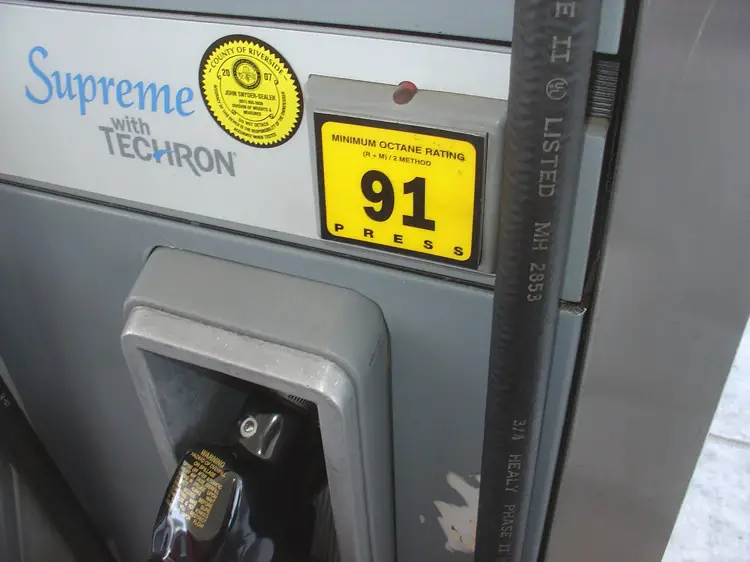ASK THE MXPERTS: WHY DOES EURO FUEL HAVE SO MUCH MORE OCTANE THAN AMERICAN FUEL?
 If you live in London this looks like low octane fuel, but it really isn’t.
If you live in London this looks like low octane fuel, but it really isn’t.
Dear MXA,
Why does American petrol have such low octane ratings compared to the fuel we use in Europe? Our fuel is much better than what they sell in the United States—how does that effect your jetting specs and mapping?
Don’t congratulate the European oil companies too soon or too much. They don’t deserve it. American gasoline and European gasoline are not all that different from each other. Yes, the octane numbers seem much higher in Europe, but that is just a parlor trick.
The octane rating of gasoline is a standard measure of the performance of a fuel. As a rule of thumb, the higher the octane number, the more compression the fuel can withstand before detonating—”pinging” in motocross nomenclature. In its simplest terms, fuels with a higher octane ratings are used in high-compression engines to fight against detonation. In contrast, fuels with lower octane numbers can be used safely in most stock four-stroke motocross engines.
The compression ratio of your engine determines how much octane your bike needs. Hopped-up engine tend to have higher compression ratios, created by high-compression pistons or milled heads. The advantage of a high compression ratio is that it gives your engine more horsepower and more punch. The disadvantage of a high compression engine is that it requires more octane to avoid pinging—and, of course, that fuel costs more per gallon.
During WWII, it was discovered that if the fuel companies added tetraethyl lead to gasoline it would improve its octane rating. Thus, leaded or ethyl fuel became the standard way to get more octane from the 1940s to the 1970s.
When lead gas was banned in 1973, gasoline got more expensive because refineries could not boost the octane ratings with inexpensive tetraethyl lead. With leaded fuel gone, the advent of unleaded fuel came into being for environmental reasons, but mostly because the lead clogged up catalytic converters. Unleaded fuel gets its octane boost from 10% ethanol.
Only 9% of all gasoline sold in America is high octane premium. Why is the number so low? Because most automobiles and motorcycles are built to run on 91 octane fuel—and running higher octane offers no performance advantage.
Octane numbers come in two different types.
(1) Research Octane Number (RON): The most common type of octane rating worldwide is the Research Octane Number (RON). RON is determined by running the fuel in a test engine with a variable compression ratio under controlled 600 rpm conditions, and comparing the results with those for mixtures of iso-octane and n-heptane.
(2) Motor Octane Number (MON): The Motor Octane Number (MON) is a better indicator of how a fuel will behave under load. It is determined at 900 rpm, instead of RON’s 600 rpm. MON testing uses a similar test engine to that used in RON testing, but MON has a preheated fuel mixture, higher engine speed and variable ignition timing to further stress the fuel’s knock resistance. Depending on the composition of the fuel, the MON of modern gasoline will be about 8 to 10 points lower than the RON.
The reason that European octane ratings seem higher than American ratings is because Europe, Japan and Australian only use the RON numbers. American and Canadian fuel uses an octane number derived from the average of the RON and the MON numbers. American fuel pumps have the designation R+M/2 to designation that the octane rating is RON plus MON divided by 2.
Simple math will show you that because of the 8 to 10 point difference of RON over MON, the octane rating shown on American fuel is approximately 5 points lower than the rating shown in Europe for the same fuel. In essence American 90-octane fuel would be the same as European 95 octane fuel.
Thus, regardless of where you live or the octane number on the pump, most unleaded fuel worldwide are the same. In Europe the number maybe 95, but it is no different than 90 octane fuel in America.





Comments are closed.